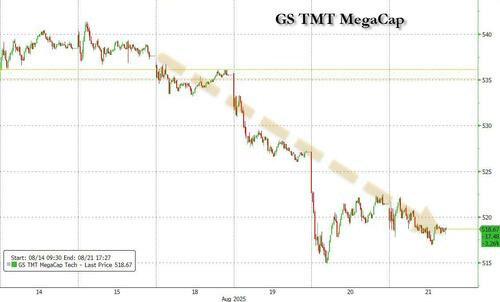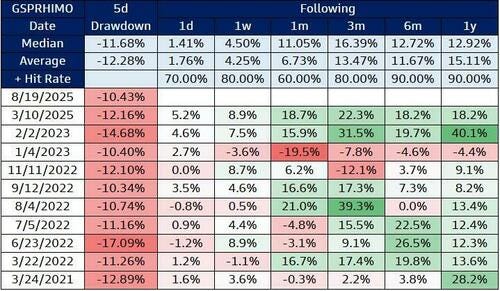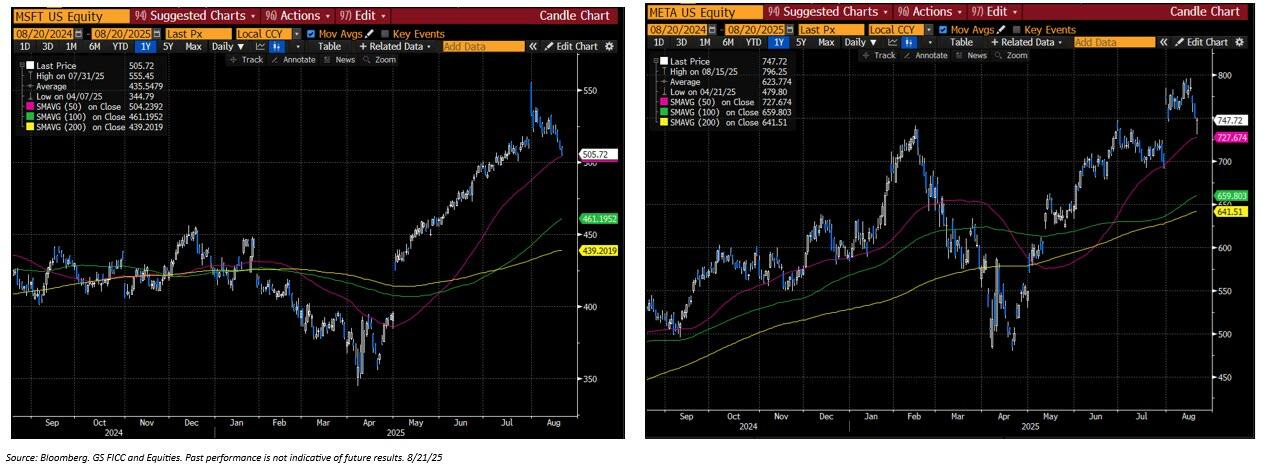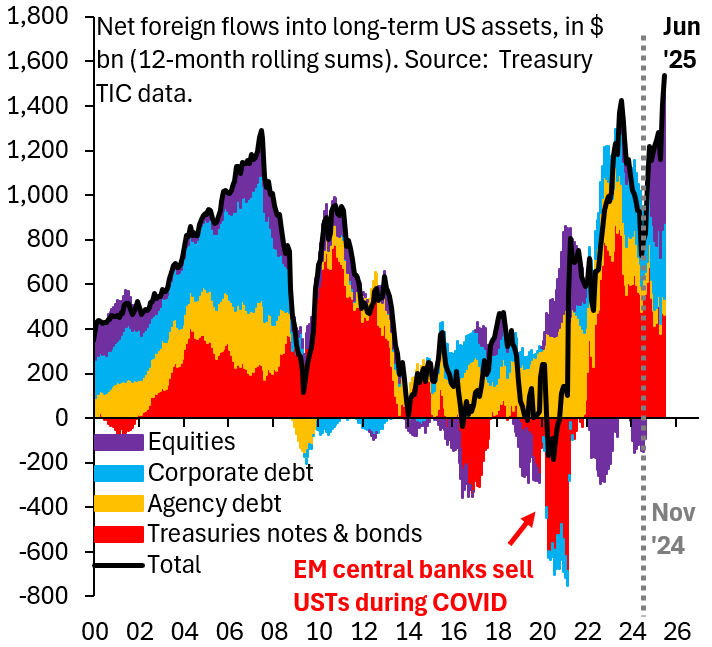TSX futures subdued with key U.S. inflation data ahead
Asia opened Friday not with conviction but with a whisper—Japan and Australia futures flat, China’s benchmarks barely green. It’s less a rally than a shuffle, a mirror of Wall Street’s hesitation where the S&P 500 slipped 0.4%, the Nasdaq lost 0.5%, and Walmart (NYSE:WMT), one of the most significant retail barometers, cratered 4.5% on gnarly tariff guidance. Big tech sagged, Treasuries sold off, yields rose, and the US dollar strutted back onto center stage.
The setup into Jackson Hole is pure tension. Markets a week ago had September cuts at 90% odds; now it’s closer to 70% as stronger PMIs and hawkish Fed voices force traders to back off the hopium. Cleveland’s Hammack bluntly said she wouldn’t ease if the vote were tomorrow, Bostic still only sees one cut for the year, and Kansas City’s Schmid warns inflation is the bigger fire. Even Chicago’s Goolsbee, usually dovish, flagged “dangerous” inflation data points.
The dual mandate is pulling in opposite directions—jobs softening, inflation refusing to die—and Powell’s Jackson Hole speech is one of the seasonal compasses left. Cut too soon and inflation expectations roar back; wait too long and the labor market cracks. It’s a tightrope over the Tetons, with no net below.
Add in Washington drama—talk of a DOJ probe into Fed Governor Lisa Cook pushed by Trump allies—and the Fed’s credibility is being tested just as Powell steps onto the global stage.
Oil, meanwhile, crept higher on whispers of new tariffs on India for Russian crude, tossing geopolitics back into the mix.
Asia is simply shadowing U.S. markets into Wyoming’s fog, tiptoeing into the Tetons with eyes fixed on Powell’s mic at 10 a.m. New York.
Traders Pacing the Floor
The tape is jittery, and no one wants to admit it. Five straight down days on the S&P 500 has traders pacing the floor, with Goldman’s MegaCap basket bleeding red for the first time since Liberation Day. Call it what it is: the generals of this rally have been stumbling, and when the captains go down, the rank and file rarely hold the line.

Tech remains the battlefield. The board is mostly red heading into Jackson Hole, but there’s a bit more shape today than Wednesday’s indiscriminate flogging. Google (NASDAQ:GOOGL) and Microsoft (NASDAQ:MSFT) are holding their ground better than most of the mega caps—fortresses in an otherwise bruised sector.
Software (ETR:SOWGn) is trading like a split jury ahead of key prints from Workday (NASDAQ:WDAY), Intuit (NASDAQ:INTU), and Zoom (NASDAQ:ZM). Semis are cracked—Analog Devices green, but the rest limping. No real dispersion here, just the tide pulling everything out.
Telcos are still split, but the “defensive” bid has thinned—AT&T over T-Mobile, towers weak, mid-cap levered names trying to squeeze through. Media? That’s where the color is: Sky squeezing higher with options buzzing, a reminder that pockets of speculation never really die, they just change costume.
The desk chatter tells the story. Yesterday’s flood of inbounds started with “why the selloff?” but by the afternoon the calls had flipped—“why the bounce?” Traders are watching intraday reversals in Oracle (NYSE:ORCL), Nvidia (NASDAQ:NVDA), Meta (NASDAQ:META), like they’re trying to decide if this is tactical dip-buying or just shorts covering in a thin market.
The truth: big tech is starting to line up around the 50-day moving average. MSFT, META both sitting on it like it’s a lifeboat. Nvidia has already pulled back 8.5% off the highs—a garden-variety 5–10% tactical shakeout before earnings, not yet the stuff of structural breakdown.

And here’s the stat the tape is whispering: in the last 10 times Goldman’s high-beta momentum basket sold off more than 10% in 5 days, the following week was green 80% of the time. Median one-week bounce? +4.5%. Over a month? +11%. Layer on regression-line support, RSI heading toward oversold—there’s technical tinder stacked, waiting for a spark.

Sentiment is fracturing. The “most loved” list reads like a who’s-who of crowd favorites—Meta, Spotify (NYSE:SPOT), Netflix (NASDAQ:NFLX), Roblox, Take-Two (NASDAQ:TTWO). The risers—Google, Pinterest (NYSE:PINS), Reddit, AppLovin—are moving up the love ladder. The battleground names—Amazon, Uber (NYSE:UBER), Booking (NASDAQ:BKNG), Duolingo—draw heated debate. And then the outcasts: Snap, Expedia (NASDAQ:EXPE), Lyft (NASDAQ:LYFT), Trade Desk (NASDAQ:TTD), Airbnb (NASDAQ:ABNB), Yelp (NYSE:YELP)—nobody’s reaching for them.
Please step back and look at the flow: early Q3 checks confirm the digital economy still has wind in its sails. Digital ads in July and August have been solid, Instagram, Reddit, and Google Search all showing strength. eCommerce? Stable and even stronger in July, with U.S. platforms benefiting from Asia competition fading and more rational marketing spend.
Content consumption remains sticky, Netflix dropping on Wednesday, and Roblox (NYSE:RBLX) pushing new experiences. Advertisers keep experimenting with AI-driven platforms across Google, Meta, Pinterest (NYSE:PINS), and AppLovin (NASDAQ:APP). The digital flywheel is alive and humming.
But the stock stories are nuanced.
-
Amazon (NASDAQ:AMZN) is past its tariff scare in Q2, but AWS is under the microscope. Investors are circling around whether capacity constraints are stunting its AI grab versus Azure and Google Cloud. Revenue grew 17.5% YoY, but without clear guidance on when the spigot opens wider.
-
Google is still printing healthy ad dollars, but questions swirl about whether AI spend translates to actual earnings once you account for depreciation, cloud revenue growth, and regulatory landmines.
-
Uber is up big YTD, bolstered by AV partnerships, but the debate is how much juice is left in U.S. mobility, whether cross-sell and advertising can scale, and how autonomous vehicles change supply-demand dynamics.
-
Meta continues to mint money with AI-driven ads, engagement and pricing both stronger than expected. But the question is long-term: does Reality Labs remain a black hole for capital? Management has raised the floor on expenses and capex—this burn isn’t slowing.
-
Spotify is grinding on growth investments, betting on innovation across audio and video to sustain user engagement. Near-term focus is ad revenue execution, tiering, price hikes, and label negotiations—all while gross margins remain the hinge.
And if you want the skew, the desk likes Instacart (NASDAQ:CART), DraftKings (NASDAQ:DKNG), Lyft, and Pinterest—names with favorable asymmetry if the market finds its feet again.
So where are we? The tape feels shaky but not broken. Tech is testing key support into Jackson Hole, momentum is oversold enough to spark reflex rallies, and sentiment, while bruised, still has clear favorites. Traders are calling it confusion, but to me, it’s just the usual churn before a major catalyst.
The board is reset, the dice are back in the cup—Powell’s Wyoming roll will decide whether the next move is a bounce or a break.
Foreign Money Doesn’t Read the Bloomberg Obituaries: $1.27 Trillion Says America Isn’t Done.
If America is truly limping, someone forgot to tell the foreigners wiring money in. Rates markets are screaming recession trades, priced for multiple cuts as if the Fed is about to capitulate under the weight of a weakening economy. And yet, the capital flows tape tells a very different story—one of record foreign demand for U.S. assets, the kind of inflow that usually signals faith, not fear. Both narratives can’t be right, and that tension is exactly what makes this tape so combustible.
The data don’t lie. TIC numbers show foreigners snapped up $192 billion in U.S. securities in June, hot on the heels of May’s record-smashing $326 billion. Even after adjusting for Americans’ own purchases of offshore assets, net long-term inflows into U.S. paper clocked in at $151 billion in June, bringing the second quarter haul to $410 billion—essentially matching the all-time record.
Stretch the lens: first half inflows of $643 billion put us on pace to rival the $1.3 trillion tsunami of 2022. Over the last 12 months, a cool $1.27 trillion has found its way into Treasuries, agencies, corporates, and equities. American exceptionalism is far from dead.

(Via Robin J Brooks)
So much for the end of “American exceptionalism.” For all the hand-wringing over Trump’s populist tariffs, Fed credibility, or the specter of de-dollarization, the world still runs back to the U.S. whenever risk flares. It’s the cleanest dirty shirt, the deepest pool of liquidity, and—crucially—the only place where both growth and policy volatility can coexist with market structures strong enough to absorb it.
The rest of the world may grumble, but when it comes time to park capital, they don’t vote with their op-eds, they vote with their wire transfers.
That’s the paradox of 2025: a U.S. economy painted weak enough to justify cuts, but markets magnetized by flows strong enough to defy the doom narrative. Call it confusion if you like. I call it the oxygen of global finance—everybody breathes it, whether they want to admit it or not.
